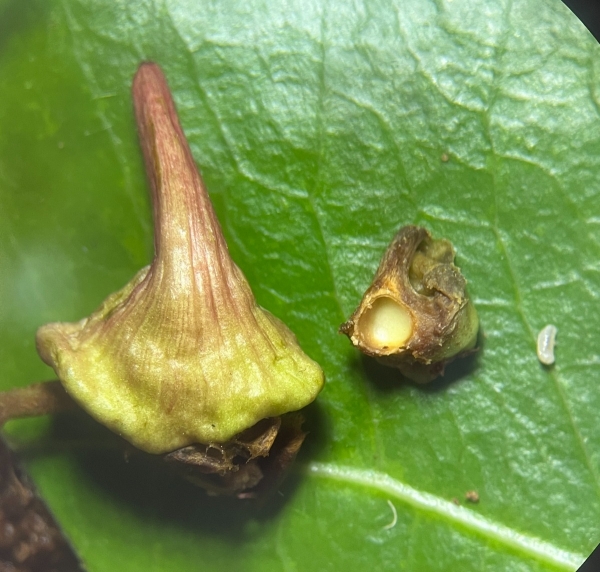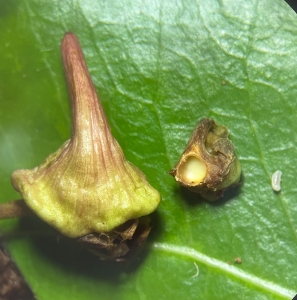
Ad type
ANNOUNCEMENT
Email
Email visible for registered users only - Login here
Description
Dear Entomology community
I’m currently working in Vietnam on Hitpage plants and have collected an insect that I could only identify to the family/order.
I’m seeking help to determine the genus or species.
I’ve attached photos and collection data. Any suggestions or help would be greatly appreciated.
Short describing:
The fruit-galler, Cecidomyiidae sp.
The larva is very small, legless, soft-bodied, translucent to opaque white, and clearly segmented. Its morphology is similar to Cecidomyiidae sp.1. Observations suggest that larvae developing inside the fruit, cause significant structural deformities, including abnormal tissue swelling that leads to gall formation, distortion of the fruit axis, or the partial to complete loss of the three wings - structures essential for the seed dispersal mechanism of Hiptage.
Gall formation on fruits has been commonly recorded across various plant species in natural ecosystems. Notably, in a classical biological control program in the United States, the gall midge Lophodiplosis trifida was successfully released to control the invasive tree Melaleuca quinquenervia, with strong impact due to its ability to induce galls on young shoots and petioles. Such gall-inducing insects often exhibit a high degree of host specificity, reinforcing the potential of Cecidomyiidae sp.2 as a candidate for biological control.
Thank you very much for spending time to read and check!
Best regards,
Xuan Mai
I’m currently working in Vietnam on Hitpage plants and have collected an insect that I could only identify to the family/order.
I’m seeking help to determine the genus or species.
I’ve attached photos and collection data. Any suggestions or help would be greatly appreciated.
Short describing:
The fruit-galler, Cecidomyiidae sp.
The larva is very small, legless, soft-bodied, translucent to opaque white, and clearly segmented. Its morphology is similar to Cecidomyiidae sp.1. Observations suggest that larvae developing inside the fruit, cause significant structural deformities, including abnormal tissue swelling that leads to gall formation, distortion of the fruit axis, or the partial to complete loss of the three wings - structures essential for the seed dispersal mechanism of Hiptage.
Gall formation on fruits has been commonly recorded across various plant species in natural ecosystems. Notably, in a classical biological control program in the United States, the gall midge Lophodiplosis trifida was successfully released to control the invasive tree Melaleuca quinquenervia, with strong impact due to its ability to induce galls on young shoots and petioles. Such gall-inducing insects often exhibit a high degree of host specificity, reinforcing the potential of Cecidomyiidae sp.2 as a candidate for biological control.
Thank you very much for spending time to read and check!
Best regards,
Xuan Mai
- Report Listing Cancel Report
- 341 Views


